Researchers at the University of Copenhagen have utilized aerial photos from 1937 to analyze the stability and growth of East Antarctica’s ice, revealing that despite some signs of weakening, the ice has remained largely stable over almost a century, enhancing predictions of sea-level rise. Credit: Norwegian Polar Institute in Tromsø
A study using a whaler’s forgotten aerial photos from 1937 shows East Antarctica’s ice has been stable and even grown, despite some early signs of weakening.
Extreme weather, melting glaciers, and rising sea levels are all indicators that the climate and the world’s ice masses are in a critical state. However, a new study from the Department of Geosciences and Natural Resource Management at the University of Copenhagen reveals a positive anomaly.
Using hundreds of old aerial photographs dating back to 1937, combined with modern computer technology, researchers have tracked the evolution of glaciers in East Antarctica. This area, which spans approximately 2,000 kilometers of coastline, contains as much ice as the entire Greenland Ice Sheet. By comparing the historical aerial photos with modern satellite data, researchers determined the glaciers’ movement and changes in size, revealing that the ice has not only remained stable but also grown slightly over the last 85 years, partly due to increased snowfall.
“We constantly hear about climate change and new melt records, so it’s refreshing to observe an area of glaciers that has remained stable for almost a century,” says PhD student Mads Dømgaard, the study’s first author.
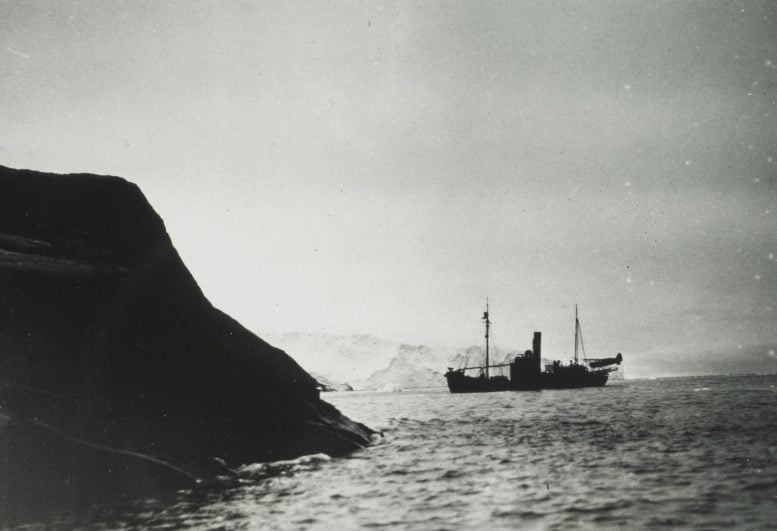
The whaling ship Firern, with the Stinson Reliant aircraft on board, near Klarius Mikkelsen Fjell in Lars Christensen Land in East Antarctica. Credit Norwegian Polar Institute
Early Signs of Change
Despite the overall stability, the research also reveals the first signs of changes in the sea ice surrounding the glaciers, indicating that these stable East Antarctic glaciers might shrink in the future.
“Our results also indicate weakening sea ice conditions, making the glaciers’ floating ice tongues more vulnerable and unable to grow as large as seen in the early aerial images from 1937. We know from other parts of Antarctica that the ocean plays an extremely important role and drives the massive and increasing melt we see in e.g. West Antarctica,” says Dømgaard.
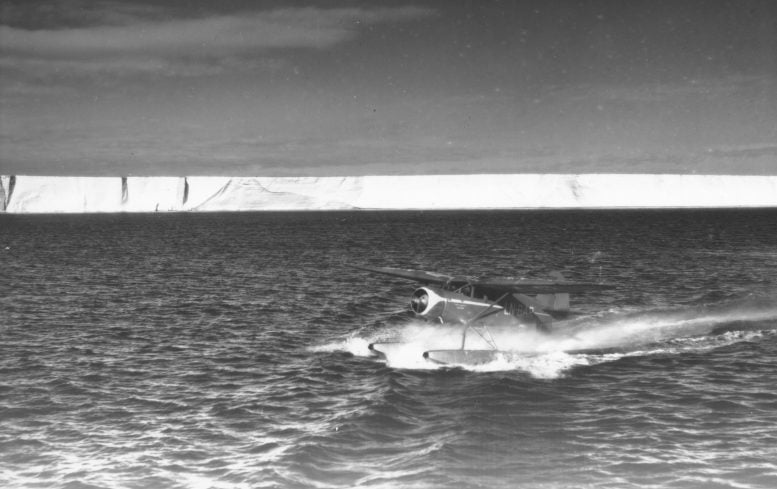
A Stinson Reliant poton aircraft (callsign LN-BAR) was used for aerial photography. The aircraft had a range of around 1200 km and an automatic Zeiss camera was mounted in the floor of the aircraft. Credit: Norwegian Polar Institute
Hidden From the Nazis
Most of the images used in the study were captured during a 1937 expedition organized and paid for by Norwegian whaler Lars Christensen. The mission aimed to produce the first maps of this part of East Antarctica, but the maps were never published due to the German invasion of Norway. Since then, the images have been stored at the Norwegian Polar Institute in Tromsø and forgotten.
When the researchers from the University of Copenhagen read about the expedition, they realized that valuable images were likely hidden in an archive in Norway. They traveled to Tromsø and reviewed all 2200 images taken during the expedition. They supplemented the Norwegian aerial images with images of the same glaciers from Australian surveys conducted between 1950 and 1974.
“By comparing the historical aerial photos with modern satellite data, we have gained critical knowledge about glaciers that we would not otherwise have had. I think it’s fantastic that these old images can be used to generated new research results almost 100 years after they were taken,” says Assistant Professor Anders Bjørk from the University of Copenhagen, who leads the group working with the historical images.
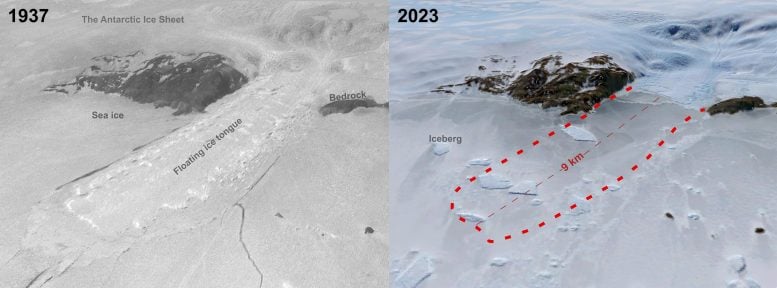
Honnörbrygga Glacier in Lützow-Holm Bay in 1937 compared to a modern Landsat satellite image from 2023. The 9km long floating ice tongue seen in the 1937 image disappeared in the late 1950s and has not grown back due to weakening sea ice. Credit: Mads Dømgaard / Norwegian Polar Institute
Potential for Rapid Sea Level Rise
The Antarctic Ice Sheet is receiving increasing attention from researchers, due to its potential for extremely large and rapid sea level rise. Unlike Greenland, very little was known about Antarctica glaciers until the 1990s, when the first good satellite observations became available.
“Early observations of glaciers are extremely valuable as they give us a unique insight into how the ice has evolved through a varying climate and whether current changes in the ice exceed the glaciers’ normal cycle of advance and retreat,” explains Dømgaard.

Ingrid Christensen, wife of Lars Christensen, took part in several expeditions to Antarctica and is considered the first woman to set foot in Antarctica. Here she is seen in the Stinson airplane in 1937 ready to throw a Norwegian flag over the land area in East Antarctica. Credit: Norwegian Polar Institute
Enhancing Predictive Models
According to the researcher, solid, long-term data is crucial for producing accurate predictions of future glacier evolutions and sea level rise, and this study provides new insights into a vast area in East Antarctica.
“The long time series of glaciers improves our ability to make more accurate models of future ice changes, as the models are trained on historical observations,” concludes Bjørk.
The findings were recently published in 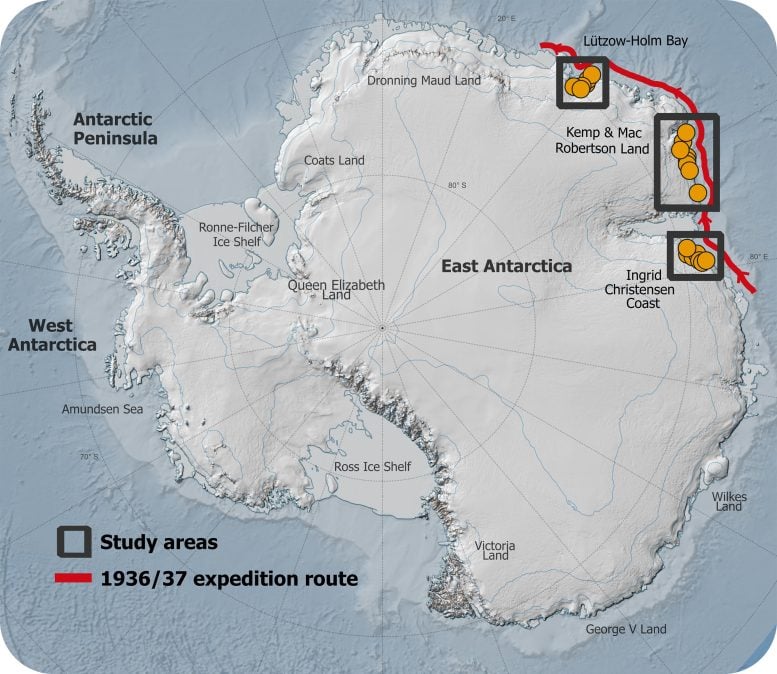
Overview map of the expedition route in 1936/1937 and the areas investigated by the researchers. Credit: Mads Dømgaard
More About the Study
- Out of 2200 images photographed from seaplanes in 1937, 130 were selected for the analysis.
- The researchers combined the historical photos with modern satellite data to create 3D reconstructions of the glaciers.
- The Norwegian aerial images were supplemented with 165 aerial images of the same glaciers from Australian surveys conducted between 1950 and 1974. This allowed the researchers to examine the evolution of the glaciers over different periods and calculate historical ice flow speeds for selected glaciers.
- Compared to modern data, the ice flow speeds are unchanged. While some glaciers have thinned over shorter intermediate periods of 10-20 years, they have remained stable or grown slightly in the long term, indicating a system in balance.
Reference: “Early aerial expedition photos reveal 85 years of glacier growth and stability in East Antarctica” by Mads Dømgaard, Anders Schomacker, Elisabeth Isaksson, Romain Millan, Flora Huiban, Amaury Dehecq, Amanda Fleischer, Geir Moholdt, Jonas K. Andersen and Anders A. Bjørk, 25 May 2024, Nature Communications.
DOI: 10.1038/s41467-024-48886-x
The research was funded by the Villum Foundation.










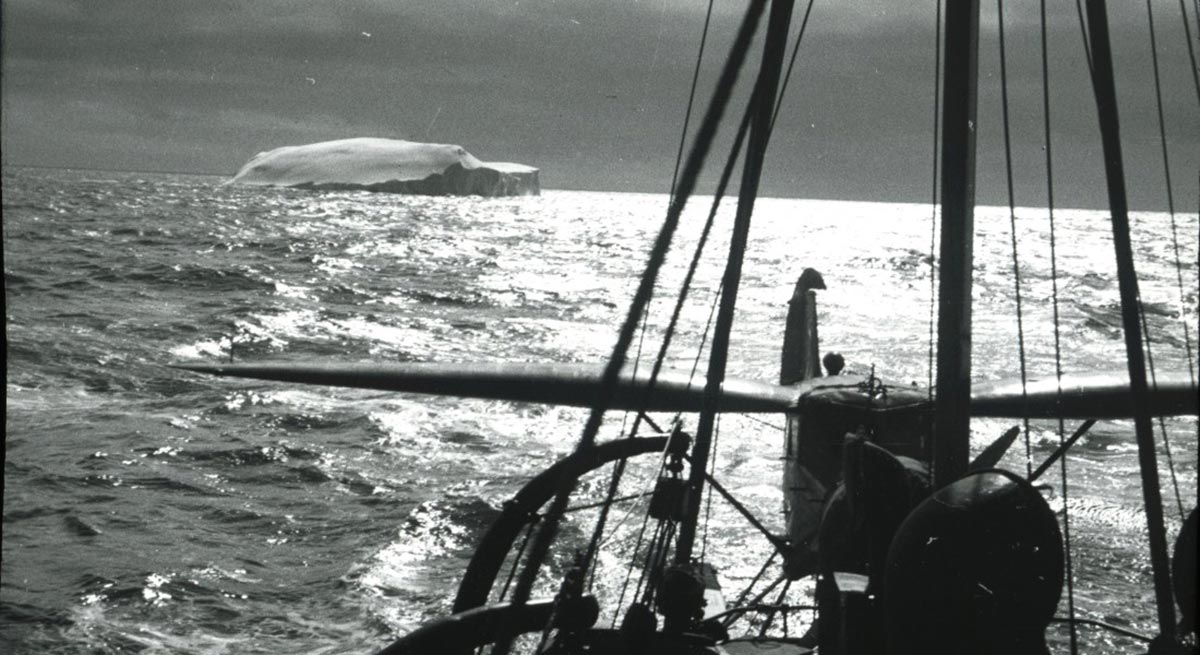










Discussion about this post